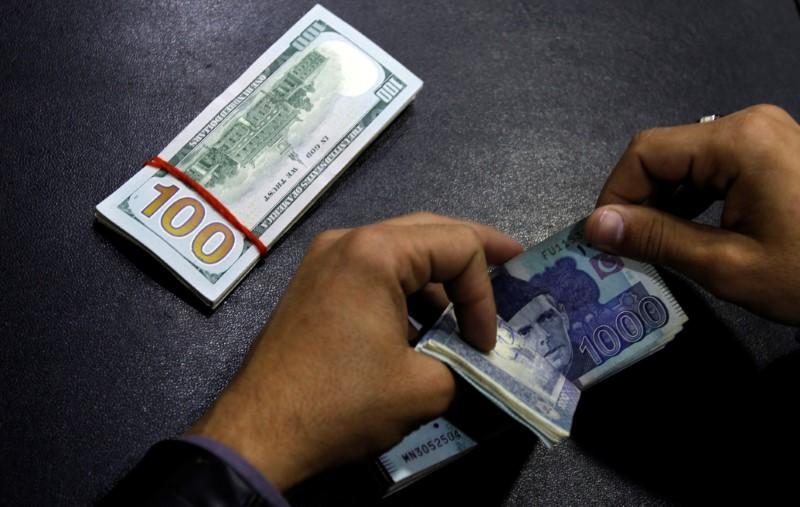
LAHORE: Pakistan’s economy is in a state of flux and the country needs intense cash flows to support internal and external account deficits. With predictions for below 3% GDP growth this fiscal year, private sector investment seems to be the only hope to turn around the country’s present economic morass.
But as the Punjab government hopes to kick-start an economic revival by enhancing support for private sector participation in development projects, investors and observers remain skeptical about the initiative’s chances of success.
Paving the way forward
In a first step towards realising the vision, the province’s governor recently promulgated an ordinance to set up both a Public-Private Partnership (PPP) Cell in the Punjab Planning and Development Board and a provincial PPP authority independent of it. The latter, under the ordinance, will be empowered to enter into contracts and dispose of both moveable and immoveable property.
Speaking to The Express Tribune, Punjab Chief Minister’s Advisor on Finance Salman Shah insisted that PPP projects were the need of the hour for the entire country. “Under the International Monetary Fund programme, we have to meet a certain primary deficit which will handicap the government’s capacity to spend on development schemes,” he said. “The current size of our development budget is not enough and the only way forward left is more public-private projects.”
“Our country is undergoing an extreme financial crunch. Punjab, for instance, has only allocated Rs350 billion for a population of more than 110 million,” said former PPP Cell member Agha Waqar Javeed.
Like a wider economic revival, the success of the Pakistan Tehreek-e-Insaf government’s flagship Naya Pakistan Housing Project also hinges on successful public-private partnerships, Javeed pointed out. The ambitious development scheme is aimed at providing five million affordable houses to those currently living without a roof over their head. “If the government wants to live up to its promise of providing affordable housing to millions without actually having the budget for it, convincing the private sector to spend is the only way,” he said.
Institutional hurdles
In recent years, Pakistan’s ranking on the global Ease of Doing Business Index has seen a slight improvement. Observers, however, note that the country still needs a proper policy at the federal level if it wants to encourage private sector investment.
Highlighting some of the obstacles to coaxing private sector participation in development, PPP Cell member Dr Farrukh Naved said issues ranging from lack of official will to departments’ inability to carry out PPP transactions kept the private sector at bay.
“The previous PPP Act restricted departments’ roles to conceiving the project and submitting it for steering committee approval,” he explained. “The system relied on PPP nodes set up within each department, but due to their lack of capacity, entire projects would be shelved before they even had a chance to get off the ground,” he told The Express Tribune.
In light of this, Naved praised the new ordinance, which he said would simplify the procedure by setting up a dedicated authority for PPP projects. “Now, any private partner will not have to jump around between dozens of different departments. They can just take their proposal to the central PPP authority.” Meanwhile, the existing PPP steering committee has been replaced with a PPP monitoring and policy board headed by the chief minister to give private sector participation maximum political support, he added.
Further elaborating on the idea behind the PPP Authority, Salman Shah said the Punjab government’s intention was to give potential private sectors partners the confidence to invest in development and to ensure any schemes carried out are completely above board.
Stakeholders ignored?
Despite Shah and Naved’s optimism though, others in both government and private sector are doubtful the new PPP authority will work as smoothly.
A transaction adviser told The Express Tribune on condition of anonymity that the government did not take potential investors on board while drafting the ordinance. “They used us transaction advisers as middlemen. The problem with that is that even though we understand private sector concerns, this is not how you build confidence among potential investors,” he said.
He added that many of the suggestions that the transaction advisers put forth, particularly those about strengthening existing PPP nodes, were ignored as well. “How can any PPP authority execute a project without taking the concerned department on board,” he asked. “If only the departments were sensitised about the dire need for PPP projects, it would have saved the government the hassle of creating a new authority which would require a lot of funds.”
Former PPP Cell member Javeed was blunter, saying the new ordinance was more harmful than beneficial. “All the government needed to do was to confront the challenge of departmental will,” he said. “The departments were unwilling to execute PPP projects because they did not have enough rent-seeking opportunities. So, instead of creating a new authority, the government should have put together an incentive structure and accountability mechanism.”
Consultant and market expert Hasnain Reza Mirza, meanwhile, said that the government could keep coming up with new policies and authorities, but nothing is going to work until they provide stakeholders what they require. “The main flaw with this ordinance is that they have not consulted the main stakeholders, the investors.”
He added that the government should have first determined why the old system failed before creating a new authority and with it, more lucrative posts for bureaucrats.
Investor apprehensions
Critics have also highlighted unwillingness among investors to stake their money in Punjab at the moment. “When you factor in the entire region, including the Far East and the Middle East, you will find there are more attractive destinations than Punjab in terms of investment,” said Javeed.
Even within Pakistan, Punjab is not the most attractive destination at present, said Mirza. “People are willing to go to Sindh, Khyber-Pakhtunkhwa, and even Balochistan, but Punjab has a negative impression due to a hostile environment for investors,” he said. “The prevalent hostile mentality towards investors needs to change if the province wants to attract foreign investment.”
Other investors in Punjab, who spoke on condition of anonymity, said the government fails to differentiate between investors and government contractors.
The investors said given the country’s current economic situation, getting into PPP projects, which are usually long-term investments, is a gamble. “With interest rates soaring, the rupee in free fall and inflation at an all-time high, the investment climate is unfavourable,” said one of them. They pointed out that only one bidder out of 17 potential bidders took part in the auction for the Lahore Ring Road Southern Loop Package 3.
“The only way to gain investor confidence in this situation is for the government to stand by them as equal partners through thick and thin,” another investor said. Another fear of keeping investors away is the specter of judicial activism and accountability institutions.
Some cause for hope
Cynicism aside, it is pertinent to point out that the Punjab government has some PPP successes under its belt. The provincial government, since it set up the original PPP Cell in 2009, has executed three PPP projects, including the flagship Lahore Ring Road.
Published in The Express Tribune, September 26th, 2019.
Like Business on Facebook, follow @TribuneBiz on Twitter to stay informed and join in the conversation.


































































COMMENTS
Comments are moderated and generally will be posted if they are on-topic and not abusive.
For more information, please see our Comments FAQ